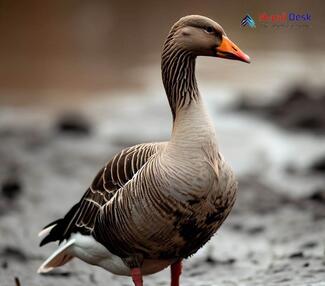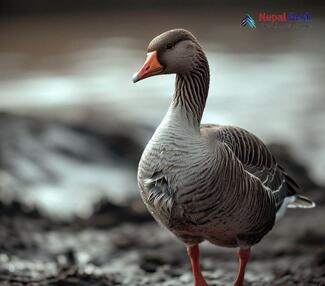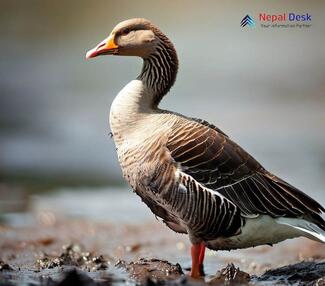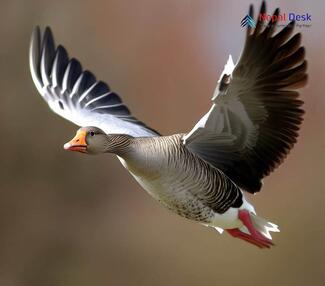The Greylag Goose (Anser anser) is a marvelous bird to observe in the wild. Its unique characteristics, diverse habitats, and fascinating behavior make it a popular subject among bird enthusiasts. In this article, we will explore the taxonomy, physical features, habitat, and diet of this remarkable species, as well as its presence in Nepal and intriguing facts about this beautiful bird.
Taxonomy
The Greylag Goose belongs to the Anser genus within the Anatidae family. This family includes ducks, geese, and swans. The generic name "Anser" derives from Latin and is related to their characteristic honking call. Within the Anser genus, the Greylag Goose holds a significant position as it is considered the ancestor of many domestic geese breeds.
Physical Features
The Greylag Goose is amongst the largest geese species. An adult can measure between 74-91 cm in length with a wingspan ranging from 147 to 180 cm. They exhibit sexual dimorphism where males are usually slightly larger than females. The bird's plumage is predominantly grey with darker grey or brown streaks on its back and wings. The bill is orange, while its legs and feet are pinkish or flesh-colored. One distinctive feature that makes this goose easy to distinguish from other species is the white patch at the base of its tail.
Habitat
Greylag Geese are highly adaptable birds found in a variety of wetland habitats like freshwater lakes, marshes, riversides, estuaries, and fields with standing water. These environments provide them with shelter, nesting sites, and food resources like aquatic vegetation and small invertebrates. Greylag Geese can be found throughout Europe and Asia during the breeding season but migrate to milder climates in North Africa, the Middle East, and South Asia during winter.
Diet
The diet of Greylag Geese mainly consists of vegetation such as grasses, leaves, stems, and seeds. However, they are also known to consume small invertebrates like insects and mollusks when available. Their feeding habits help control the growth of aquatic plants in their habitats.
Presence in Nepal
Nepal serves as one of the wintering grounds for Greylag Geese during their migration journey. Several wetlands and lakes in Nepal like Rara Lake, Koshi Tappu Wildlife Reserve, and Chitwan National Park host substantial populations of these beautiful birds each year, making it an ideal destination for birdwatchers and enthusiasts alike.
Fun Fact:
One fascinating aspect of Greylag Geese is their strong pair-bonding behavior. They form monogamous relationships, and pairs stay together for life. The geese are also known for their vigilant nature while nesting; they can be quite aggressive against potential threats to protect their eggs and offspring.
In conclusion, the Greylag Goose is a fascinating bird with unique features that make it an attractive subject for naturalists and birdwatchers around the world. Its adaptability to various wetland habitats, presence in Nepal during winter months, and interesting social behavior contribute to its charm amongst avian enthusiasts.




